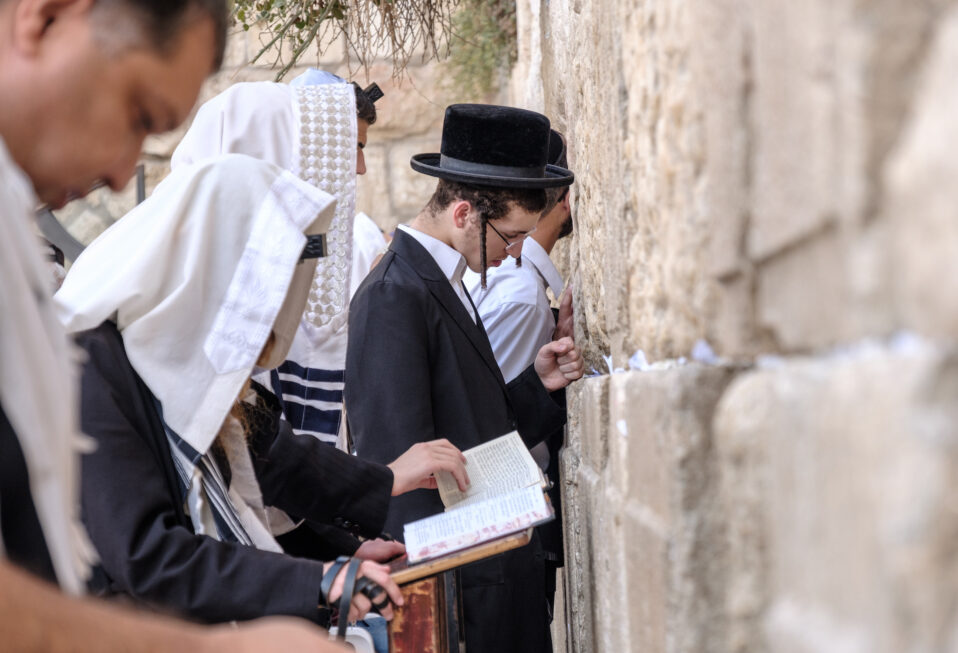By Julie Stahl
“And in the fifth month, on the seventh day of the month (which was the nineteenth year of King Nebuchadnezzar king of Babylon), Nebuzaradan the captain of the guard, a servant of the king of Babylon, came to Jerusalem. He burned the house of the LORD and the king’s house; all the houses of Jerusalem, that is, all the houses of the great, he burned with fire” (2 Kings 25:8-9 NKJV).
Tisha B’Av (“the ninth of the Hebrew month of Av”), is considered the saddest day on the Jewish calendar. It commemorates the destruction of both the First and Second Temples as well as other disasters that have befallen the Jewish people throughout the millennia.
Although the day is based in part on biblical events, it is a Rabbinic fast day that marks the end of a three-week mourning period.
Rabbis say that both the First Temple built by King Solomon and the Second Temple built after the return from the Babylonian exile and expanded by King Herod the Great were destroyed on Tisha B’Av.
Jewish people also remember other tragedies that happened to them during this time, such as the Crusades, the Inquisition, pogroms, the Holocaust, and anti-Semitism in general.
For instance, the Expulsion Order from England in 1290 was issued on Tisha B’Av; and the Alhambra Decree or Edict of Expulsion from Spain was issued on March 31, 1492 and gave the Jews until July 31 of that year to leave—that was Tisha B’Av.
More recently, in 2005, many Israelis took note when Israel’s uprooting of 9,000 Jewish Israelis from 21 Gush Katif Jewish communities in the Gaza Strip and four in the northern West Bank (Samaria) were uprooted in what was called the Disengagement. It was considered by political leaders at the time to be a unilateral “peace” move. Ironically, it occurred just at the end of Tisha B’Av.
Rabbi Welton told a story about the significance of Tisha B’Av throughout history revealed in a legend about French leader Napoleon Bonaparte. While traveling through a small Jewish town in Europe, he rode by a synagogue and heard terrible cries coming from within.
“Peering through the window, he saw an incredible sight: hundreds of men and women weeping. They were sitting on the floor on small stools holding candles while reading from books. The synagogue had an elaborate chandelier but only a few candles were lit. If not for the small candle lights, the magnificent synagogue would have been in complete darkness. It was a gloomy and sad sight to behold,” writes Rabbi Welton.
“Napoleon asked his advisers what misfortune had happened there. His top adviser responded that nothing new and terrible had happened, but that the Jewish people had a tradition to gather once a year on a day they called the ninth day of Av, the day marking the destruction of the Temple in Jerusalem. Twice they built a magnificent Temple in Jerusalem and both were destroyed. After their second Temple was destroyed, the people were scattered all over the world and sold as slaves and somehow the Jewish people still exist without their Temple. In order to commemorate these sad events, they gathered once a year in synagogue. There they fasted, prayed, and read sad prophetic writings concerning the destruction of their Temple and land.”
“The adviser concluded, ‘Mon Roi (“my King”), what we see in this town is happening today in Jewish communities around the world.’
“Napoleon then asked, ‘And how many years ago was this Temple destroyed?’
“The advisor answered, ‘Over two thousand years ago.’
“His eyes widening in surprise, Napoleon exclaimed, ‘A nation that cries and fasts for over two thousand years for their land and Temple will surely be rewarded with their Temple,’” Welton concluded.
Today, Tisha B’Av is still considered a day of mourning, fasting, and prayer. The book of Lamentations is read in the synagogues. In Jerusalem, thousands of people often walk around the Old City Walls in a group at night.
Julie Stahl is a correspondent for CBN News in the Middle East. A Hebrew speaker, she has been covering news in Israel full-time for more than 20 years. Julie’s life as a journalist has been intertwined with CBN—first as a graduate student in Journalism at Regent University; then as a journalist with Middle East Television (METV) when it was owned by CBN from 1989-91; and now with the Middle East Bureau of CBN News in Jerusalem since 2009. She is also an integral part of CBN News’ award-winning show, Jerusalem Dateline, a weekly news program providing a biblical and prophetic perspective to what is happening in Israel and the Middle East.




Post a comment